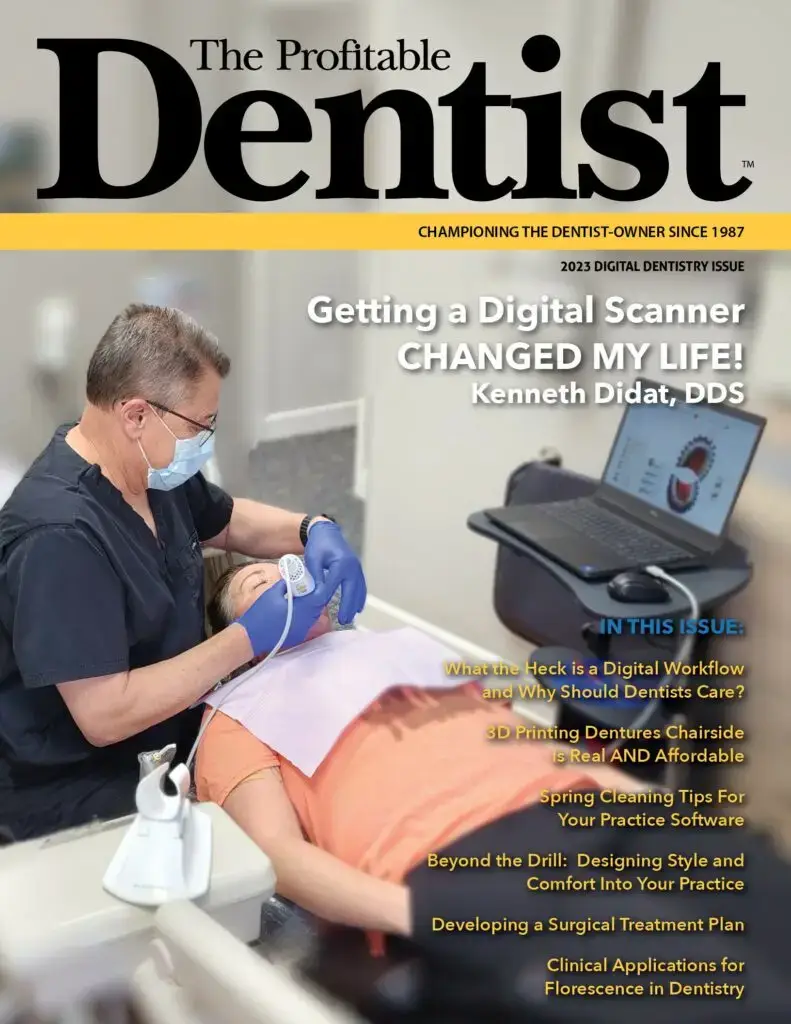In many ways, it’s a great time to be a dentist and/or practice owner. In 2017 alone, the average net income or a private general practitioner was $197,190 an increase of 13% over the previous census. That said, no independent dental professional should disregard the technological advances that make it easier than ever to reach potential new patients and ultimately increase the profitability of your practice.
While start-up private practices are far from obsolete, large DSO’s have been wooing recent graduates and seasoned dentists alike into a corporate career path. Many private practice owners are working to combat this shift. One survey found that upwards of 50 percent of private practice owners have offered deep discounts as a part of their marketing strategy to appeal to new patients and compete with the ever-expansive marketing budgets of corporate dental chains.
Thankfully, as a practice owner, you don’t have to cut your way to profitability; instead, use digital marketing to target people in your area who may have just moved to your community or looking to find a new dentist.
One – Establish a Social Rapport with Potential Patients.
The advent of social media targeting has leveled the playing field in countless industries. Dentistry is no exception; you can use digital tools to target new patients with precision.
While the medium is important, the people you’re targeting are even more critical. Whether you’re filtering by zip code, city or county, try to stay as local as possible. Once you’ve identified your target audience, it’s time to take your marketing efforts to the next level.
Two – Setup Your Facebook Pixel.
Approximately 171.4 million Americans use Facebook at least once per month. A good portion of those people use it to hunt for dental and medical information for themselves or their kids. This is where the Facebook pixel (code you place on your website that uses cookies to track how users interact with your Facebook ads) proves its power. Use a pixel to retarget individuals further down your sales funnel, gathering information that makes it possible to contact people who are interested in your services.
Three – Limit Your Target Audiences.
Set a dollar amount (it could be $100 or $1,000 per month) for your sponsored social posts, and then stick to that rate regardless of how many distinct audiences you target. At most, you should target three audiences; targeting too many people is as bad as targeting no one.
Four – Intensify Your Reach.
For more chances to convert, you need more eyes on your posts. Promoted Tweets or Facebook Ads can help you reach a larger audience, but you don’t necessarily need to pay for followers or likes. This can be as simple as a call to action at the end of your posts asking readers to schedule an appointment online or fill out a short contact form for more information.
Five – Make Your Marketing Pop.
Twitter’s Video Website Card is changing the way brands advertise on the social platform. Pairing auto play video with a company’s website link, it allows advertisers to create ads that stand out within news feeds. Ads using the tool received twice as many click-throughs as traditional mobile video ads.
Private dental practices, like most healthcare fields, aren’t leading the charge of digital marketing. But that doesn’t mean your office has to take a back seat. Social media marketing isn’t easy, but remember this the next time you think about discounting your services:
- Discounting creates an expectation that everything can be negotiated.
- If you have the expertise and are skilled at your craft, don’t undermine yourself. Price is not the most important factor when it comes to treatment plan acceptance.
- Focus on value. This should be your #1 priority. Emphasize how your services will improve their well-being and move them toward 100% dental health.
In the end, researching and targeting new patients through social media allows you to focus on the real value they’ll receive from your services and is a better sell than slashed prices.




